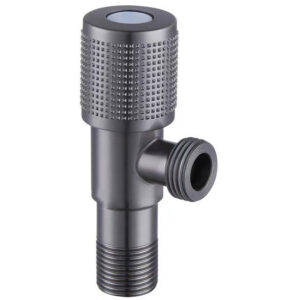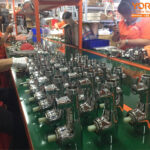A zinc angle valve is an essential plumbing component made from zinc alloy, known for its affordability, corrosion resistance, and ease of installation. It is widely used in controlling water flow for faucets, toilets, and water heaters. To ensure a secure and leak-proof installation, follow this step-by-step guide.
Tools and Materials Required:
– Zinc angle valve
– Adjustable wrench
– Teflon tape (plumber’s tape)
– Pipe sealant (optional)
– Clean cloth
Step 1: Turn Off the Water Supply
Before installation, shut off the main water supply to prevent water leakage. Open nearby faucets to drain any remaining water in the pipes.
Step 2: Remove the Old Valve (If Applicable)
If you are replacing an existing zinc angle valve, use an adjustable wrench to unscrew it from the water pipe. Clean the pipe threads with a cloth to remove any residue or old sealant.
Step 3: Apply Teflon Tape
Wrap Teflon tape around the male threads of the water pipe in a clockwise direction. This helps create a waterproof seal and prevents leaks.
Step 4: Install the Zinc Angle Valve
Screw the zinc angle valve onto the pipe threads by hand until it is snug. Then, use an adjustable wrench to tighten it further, ensuring a secure fit but avoiding excessive force, which may cause damage.
Step 5: Connect the Water Supply Line
Attach the outlet of the zinc angle valve to the hose or pipe leading to the faucet, toilet, or appliance. Tighten the connection securely using a wrench.
Step 6: Check for Leaks
Turn on the main water supply and slowly open the zinc angle valve. Observe the connections carefully for any leaks. If leakage occurs, turn off the water, tighten the fittings, or reapply Teflon tape.
Maintenance Tips
– Periodically check the zinc angle valve for leaks or corrosion.
– Clean the chrome-plated surface regularly to maintain its shine and durability.
– If water leaks from the valve, replacing the **rubber washer** inside may solve the issue.
Conclusion
Installing a zinc angle valve is a straightforward process that improves water flow control in household and commercial plumbing systems. Following these steps ensures a secure and leak-free installation, extending the valve’s lifespan and maintaining plumbing efficiency.







